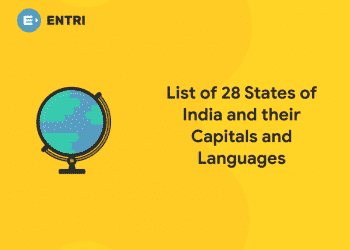Table of Contents
The films may show its protagonist very heroic by taking a cigarette in style to the lips and smoke in style and say heroic dialogues. This glorified scene may inspire us to imitate the same for the heroic appearance. But in reality, does it make so heroic? Well, it won’t but it will make the contrary. Tobacco consumption is injurious to health, tobacco kills. These kind of information and precautions are showing in films when they show some tobacco consumption as glorified. The tobacco consumption has thrown the world to a cancerous world where many of the people including the youngsters strive hard to get up from the struggle. Considering the harmful effects and the abundant level of diseases caused by the tobacco the world health organization is observing May 31st as Anti-Tobacco Day or No-Tobacco Day across the world to send the awareness against the bad effects of the tobacco to the people. When we reach near to the Anti-Tobacco Day or No-Tobacco Day let us look into the theme significance of the Anti-tobacco day or No-Tobacco Day initiated by the world health organization this year of 2023
Register in to get the latest Exam Study Materials, PDFs, Video Lessons, Mock Tests! Limited Offer!
Anti Tobacco Day 2023: Date
Annually in May, the World Health Organization (WHO) and its member nations celebrate World No Tobacco Day (Anti Tobacco Day). Through this annual campaign, WHO aims to raise awareness of the deadly effects of tobacco. WHO and the member nations suggests governments formulate policies and laws that can help to reduce smoking and the use of other tobacco products among the citizens.
In 1988, the Forty-second World Health Assembly passed the resolution WHA42.19, calling for observing the World No Tobacco Day, every year on May 31. Since then, the World Health Organization and its members have supported World No Tobacco Day every year. To celebrate this day and to spread awareness every year WHO chooses a theme upon which it will organize different meetups and competitions.
Every year the Tobacco causes more than 8 million deaths. Among that, the one-sixth of the global tobacco-related deaths are from our very own India. While 7 million deaths are because of direct tobacco use, the remaining deaths are the result of second-hand smoking. According to WHO, there are around 1.1 billion smokers across the globe. Among them, 80% live in low and middle-income countries. The tobacco epidemic is one of the biggest public health threats in the earth. Every year thousands of children are getting into this messy addictive labyrinth. According to the 2016-17 Global Adult Tobacco Survey-2 by the WHO, 26.7 crore adults in the age group of 15 years and above (29% of the adults) consume tobacco in some form or the other.
The Electronic nicotine delivery systems (ENDS) and electronic non-nicotine delivery systems (ENNDS), popularly known as the e-cigarettes, do not contain any tobacco contents and may or may not contain nicotine. Even though the tobacco and nicotine are absent in these products the harmful vapour from these devices are indeed harmful.
Register in to get the latest Exam Study Materials, PDFs, Video Lessons, Mock Tests! Limited Offer!
According to the World Health Organization, tobacco companies across the globe use many tactics to appeal to the younger generation;
- Flavours: Manufacturers are using flavoured tobacco and nicotine products to attract youth. Nowadays the Tobacco products are available in flavours like cherry, bubble gum, cotton candy, etc
- Design: The century-old stick-shaped cigarettes are now out of fashion, people are seeking for unique and luxurious designs for their products. Latest products are shaped like USB sticks or candy, making them attractive, and easy to carry and to hide.
- Unproven Claims: Manufactures have now infused technology in their products and advertising them as vapours. They are claiming to be less harmful, but studies show the other way.
- Endorsements: Paid Influencers, Celebrities, and movie stills, contests etc are now tools in the digital marketing arena.
- Point-of-sale: Tobacco products near the bill counters, and near the candy stand making them noticeable is also a sales trick.
- Movies and More. Showing tobacco and nicotine products in movies, TV, and streaming shows can make them seem appealing.
- Vending machines that sell tobacco products. They can be covered with advertising and placed at venues where young people often go.
Anti Tobacco Day/ No Tobacco Day: May 31
Register in to get the latest Exam Study Materials, PDFs, Video Lessons, Mock Tests! Limited Offer!
Anti-Tobacco Day 2023: Theme
No Tobacco Day 2023 theme hasn’t declared yet.
Through this 2022 global campaign WHO is aiming to expose the tactics and intentions of the Tobacco industry. WHO hopes to bust the myths around Tobacco usage by providing essential information to the public on how they are getting manipulated to use these harmful products. The organization is seeking the help of influencers, social media celebrities, pop musicians, and all sorts of influencers to reach the millions.
Register in to get the latest Exam Study Materials, PDFs, Video Lessons, Mock Tests! Limited Offer!
Since the Tobacco manufactures and marketers are targeting the younger generation by adding flavours, providing sleek designs, marketing its use as a cool symbol, etc. The youth is popping up as volatile but addictive consumers, WHO is pressuring its member nations to formulate policies to avoid an addictive generation.
- 2022: Theme ‘Protect The Environment’
- 2021 Theme: ‘Commit to quit’
- 2020 Theme: ‘Tobacco Exposed
- 2019 Theme: ‘Tobacco and lung health
- 2018 Theme: ‘Tobacco Breaks Hearts: Choose health, not tobacco’ #NoTobacco.
In India, if you required help to quit the Tobacco you can seek help from either Quit plan or give a missed call on 011-22901701 for registration.
Click here to attempt free GK Mock Test
Conclusion
Through this blog I hope every person will leave their habit of tobacco consumption in any form understanding the worst consequences to you and your family. Every exam aspirant should also focus not to smoke and not to consume tobacco and besides that he should be conscious in understanding the material facts and ideas said in the blog for the exam point of view. The importance of every day is important for a competitive exam preparator and importance of his everyday life is important for a smoker to realise the bad effects and save his future life. Entri wishes you all the best for your upcoming examinations. Start your Preparation today itself. Entri will help you with thousands of questions. Attempt mock tests, analyze yourselves to improve your success rate. So go through the blog in detail and understand the facts and ideas and crack any competitive exam and gain success. Keep studying and Keep winning













